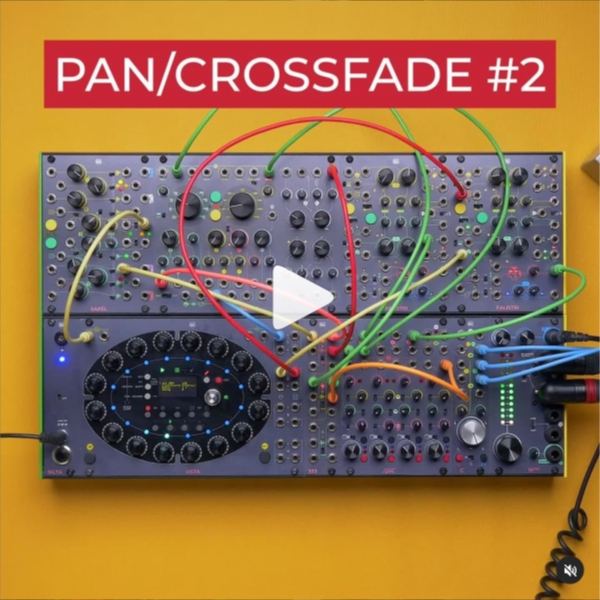Loading cart contents...
- resources /
- techniques /
- Pan/Crossfade #2
The first and last channels of the QSC feature a voltage-controllable panpot, just like the C channel. However, by combining this feature with the pan/crossfade switch, you can obtain a voltage-controlled crossfader! In this patch, we demonstrate both behaviors with the same CV, a bipolar LFO coming from FALISTRI’s green generator.
INGREDIENTS
- 1 QSC
- 2 FALISTRI
- 1 BRENSO
- 1 USTA (Optional)
DIRECTIONS
-
- Patch two different sounds to the first QSC channel’s left and right inputs.
(In this patch we used BRENSO’s Final output and the green triangle output set to flip sync.) - Set the behavior to Crossfade as described in Pan/Crossfade #1.
- Patch another source to the fourth QSC channel’s left or right input.
(We used FALISTRI in synth voice mode.) - Set another FALISTRI’s generator to Loop and its time scale to Long to obtain an LFO.
- Patch its bipolar output to the 333 to duplicate it.
- Patch a copy to the first channel’s Pan/Crossfade CV input.
(Here the LFO defines the blend of the two sound sources.) - Patch another copy of the same LFO to the fourth channel’s Pan/Crossfade CV input.
(Here the LFO controls the left/right balance of the mono source, since the switch is still set to Pan.)
(When a CV is patched, the panpot acts as an offset. Since we are using an already bipolar LFO, we don’t need to make any adjustment.)
- Patch two different sounds to the first QSC channel’s left and right inputs.
